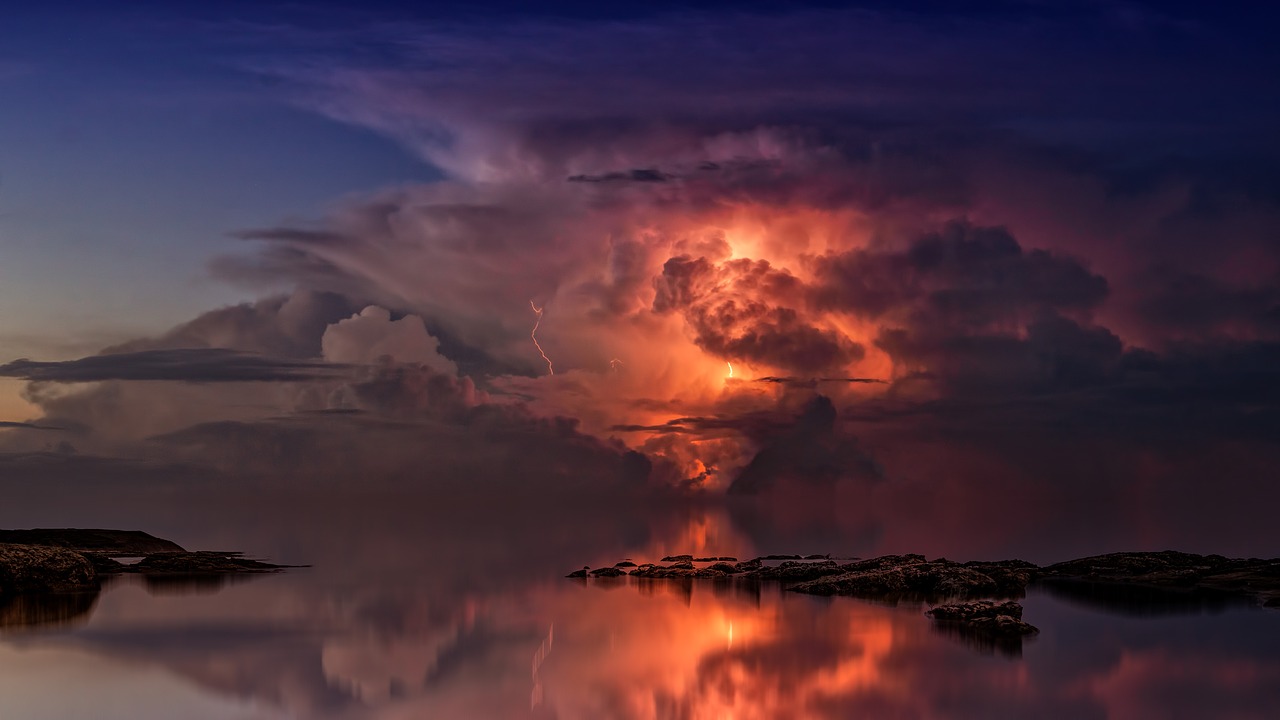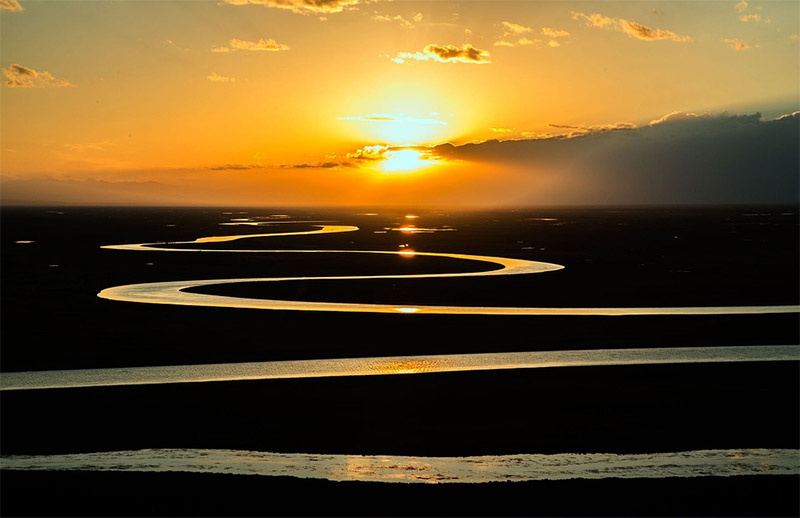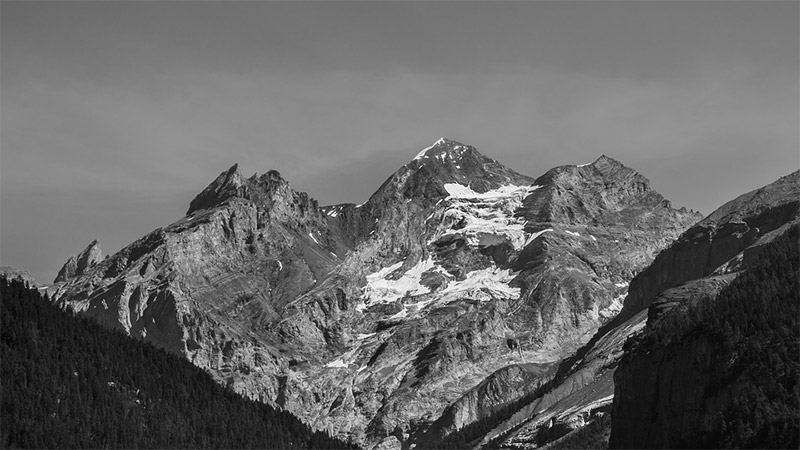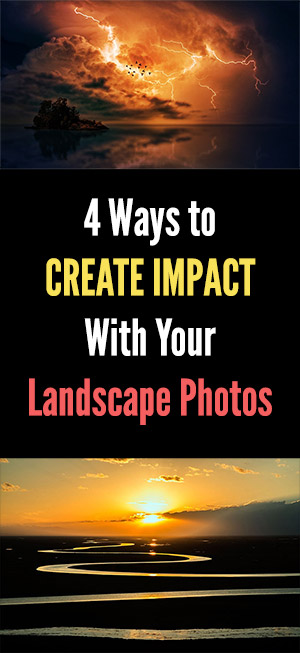
Photo by jplenio / CC0
In order to excel, your landscape photography needs to make a real impact. There is no use in creating a photograph which is technically perfect, is produced and printed in exactly the right way, and yet makes no impact on the viewer.
So, how can you create that impact? Here are a few ideas you can try.
1. Use a Dramatic Composition

Photo by cowins / CC0
Composition is the most key element of photography. It can make the difference between an image taken by an amateur, and an image which holds a more professional level. It can also make an impact. Depending on how you use it, composition can either fade away, becoming almost invisible to the eye – or it can make a statement about the photographer.
An example of this is could be a landscape in which two stones stand at equal height in an otherwise flat field. Picture that image: there are so many different ways it could be composed. A photographer who wants to capture the situation, but allow the composition to fade away, could stand back and capture one closer to the camera and one further away. This would create an interesting image, but wouldn’t really make the viewer think about the composition.
If, however, the photographer moved and framed the stones so that they stood as equal markers of the same height, and left the same distances between the stones as between the edges of the frame, this would create a dramatic composition which carries echoes of symmetry and geometric design. The viewer would look at this and see the deliberate decision made by the photographer to capture this image in the frame. The composition would be so dramatic, in fact, that it might overshadow the landscape itself.
→ Related reading: 4 Expert Tips to Improve Your Landscape Composition
2. Go Black and White

Photo by fxxu / CC0
Monochrome photographs always make more of an impact. We are trained to think of a black and white image as being historic, and therefore important. When a photograph is turned monochrome, the viewer is keyed in to the fact that this is a more important image for them to view. This can impart real seriousness to the image, and the somber aspect is capable of creating different emotions in the viewer.
Take a rocky mountain range. In colour, it looks spectacular – of that there is no doubt. In black and white, however, another feeling emerges. You can see the valleys and ridges as dark lines of shadow, and the snowy regions in contrast as absolute white. The landscape almost ceases to be a place and becomes a piece of art instead. This is something that Salgado, for example, was very good at using to create more intense feelings in his photographs of mountainous regions.
Bear in mind that going black and white isn’t a one-stop fix for your photograph. It still needs to work compositionally, and it’s also important that the image itself suits monochrome. In some landscapes, the full colour form can actually be more powerful instead.
→ Related reading: Intro to Black & White Landscape Photography
3. Find a Message
A photograph is always more powerful if it carries a message. A beautiful valley may be good to look at, but after seeing it, the viewer is likely to forget all about it. A message, however, will stay with them for much longer. You might even be able to create a more far-reaching impact if your message inspires the viewer to action.
An example of this might be choosing a landscape view which highlights the way that humans are destroying the earth. You might find a viewpoint where you can photograph both a beautiful area of natural wonder, and the roads or construction work that is steadily cutting into this wildlife. You could capture an injured or polluted animal as part of your landscape. You could even place humans into your landscape in such a way that makes the viewer realise how much harm they are doing.
Finding a message is not so easy as simply deciding your message and then taking a picture. You have to make sure that the viewer will understand what you are trying to say, and this isn’t easy. It often takes a lot of forethought and planning, and you may need to scout many locations before you find what you are looking for.
4. Use the Weather

Photo by jplenio / CC0
A good way to make a photograph look more dramatic is to use the weather. A clear, blue sky translates into monochrome as spotless white. This isn’t likely to make much impact – unless you are telling a story about contrast – but there’s a way that the sky could change the whole mood of the image. If you captured a dark, moody sky with roiling storm clouds instead, or even a bolt of lightning flashing down, this would be far more dramatic and impactful.
If you are interested in documentary photography, or capturing reality, then you will need a lot of patience for this – as well as some wet weather gear to keep your camera safe. On the other hand, if you don’t mind being a little more creative, you only need to capture a handful of stormy skies to create your own database of horizons. You can then swap these in for boring skies to give your photographs more of an impact.
If you do go down this route, then make sure that you integrate your composite seamlessly. This means practicing blending the sky with the original horizon line, as well as ensuring that the lighting is the same across both parts of the image. A stormy sky over a landscape which is fully illuminated in sunshine might not look very realistic, so you’ll have to be creative with your tweaks!
→ Related reading: Photographing Landscapes in All Weather
There are so many ways in which a landscape photograph can offer impact. If you’re still stuck after trying these tips, take a look at examples of photographs which you feel have a big impact for the viewer. Examine how the photographer has created that impact and try to emulate it yourself.

Photo license link: CC0